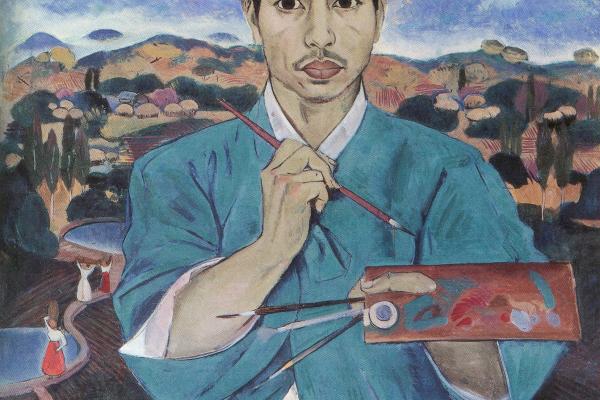
The Institute for Korean Studies presents
"Daunting Challenges, Dynamic Changes: 20th Century Korean Art"
Dr. Youngna Kim, Professor Emerita
Department of Archaeology and Art History
Seoul National University
Flyer: ![]() Youngna Kim Flyer.pdf
Youngna Kim Flyer.pdf![]()
Abstract: In Korea, the modern age has been defined by the constant collision and fusion of the traditional and contemporary, and also of East and West. It was only during this period that Korean culture emerged from Eastern culture to establish itself on the global stage. But modernity has also brought great tragedy to Korea, in the form of Japanese colonial rule (1910-1945), followed shortly thereafter by the Korean War (1950-1953).
As Korean society has been reshaped by virtually unprecedented political and economic transformation, the field of Korean art has experienced its own massive changes. Starting in the 1910s, influenced by the introduction of Western techniques and materials (especially oil painting), Korean traditional art began to branch out from conventional ink wash and colors, seeking new forms of expression. Using these new materials as their primary medium, Korean artists documented and interpreted their society’s transition into modernity. In this way, Korean modern art was born.
The 1950s saw the emergence of abstract art, as artists engaged freely in a wealth of diverse experimentations as art movements from Europe and the United States were introduced directly to Korea. However, in the 1970s, as the Korean economy continued to improve, the Monochrome movement came to dominate the mainstream, as artists searched for a way to capture the inherent Korean identity without following the West. Then in the 1980s, artists began openly rejecting Western ideas and forms, leading to the rise of Minjung art (or “People’s art”), which embodied the culture and traditional values of the Korean populace. Over the last twenty years, as interest in Asian contemporary art has steadily increased, many Korean artists have achieved great international success. Within the context of social changes, this lecture will examine the daunting challenges and dynamic changes that have shaped the development of Korean modern art over the past 100 years.
Bio: Dr. Youngna Kim is Professor Emeritus of the Department of Archaeology and Art History at Seoul National University and former director of the National Museum of Korea, which she headed from 2011 to 2016. Dr. Kim received a B.A. from Muhlenberg College and her M.A. and Ph.D. in History of Art from The Ohio State University. Although formally educated in Western modern art, she has written extensively on Korean modern and contemporary art.
Her publications include several books and many articles: Twentieth Century Korean Art (Laurence King, London, 2005), Tradition, Modernity and Identity: Modern and Contemporary Art in Korea (Korea Foundation, Hollym, Seoul, 2005) and “Urban Transformation of Seoul and Visual Culture,” Companion to Asian Art (edited by Deborah Hutton and Rebecca Brown, Blackwell, 2011), and many others. Her most recent article “Korea’s Search for a Place in Global Art History” appeared in the March 2016 issue of Art Bulletin.
This event is sponsored by OSU’s Department of History of Art, the Institute for Korean Studies, and a U.S. Department of Education Title VI grant to The Ohio State University East Asian Studies Center.
